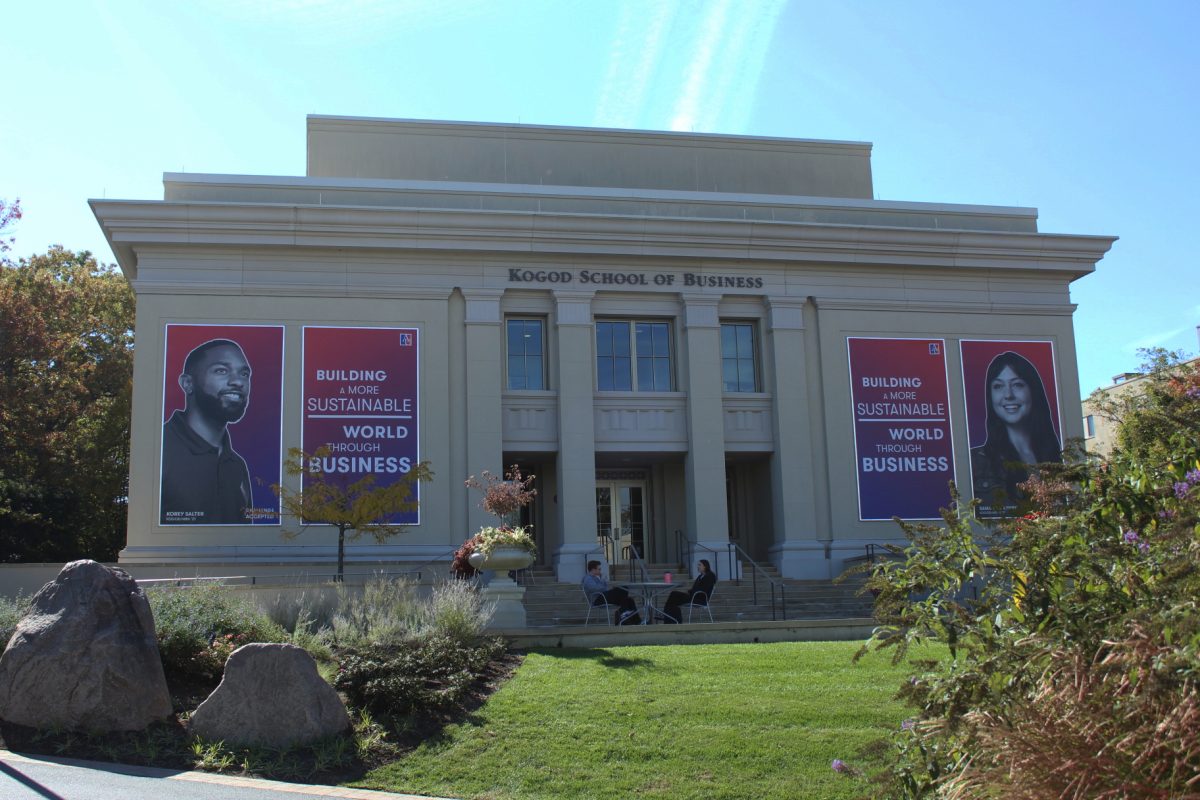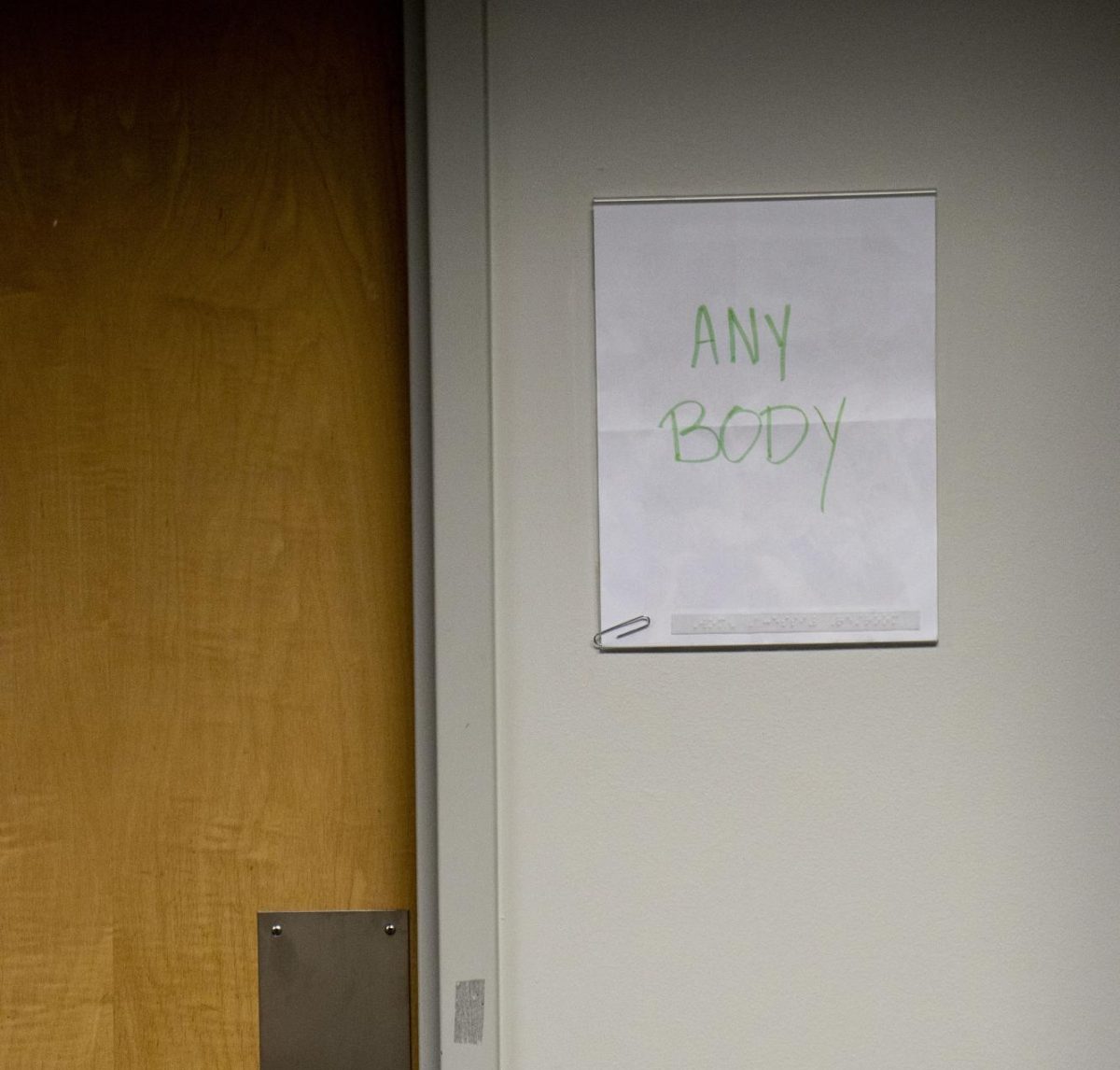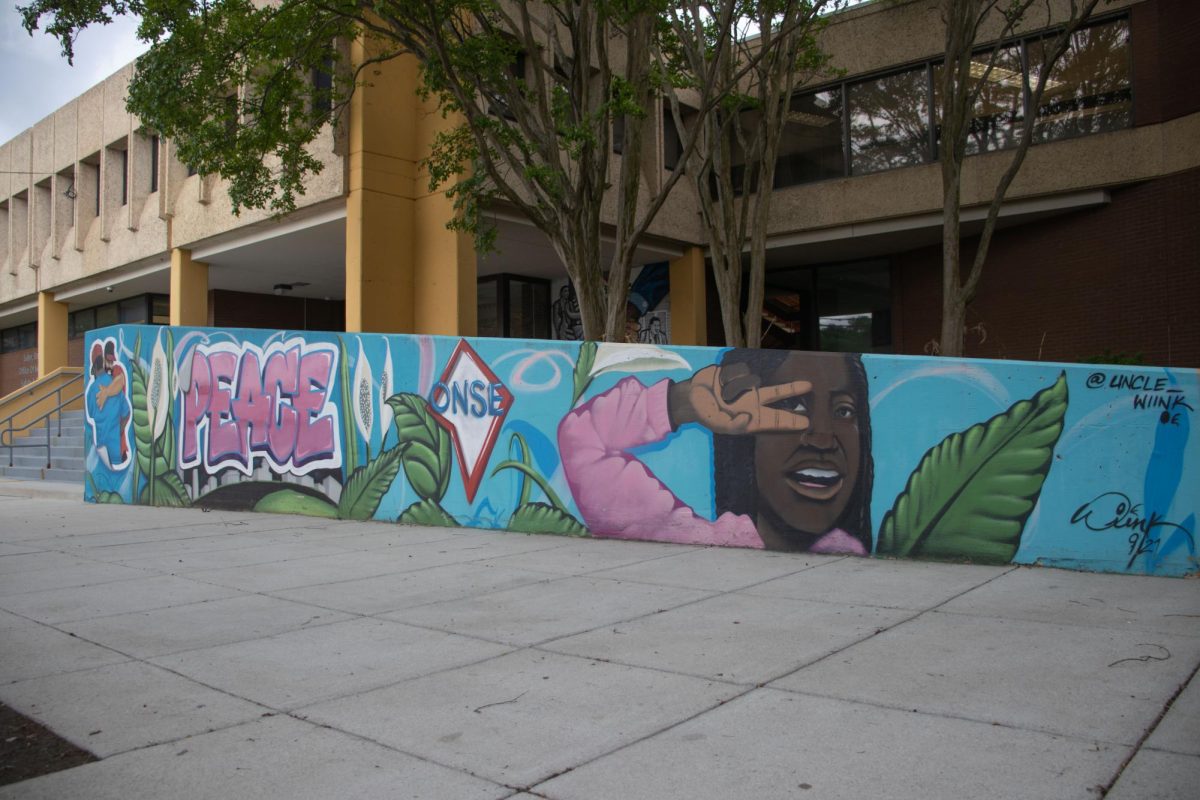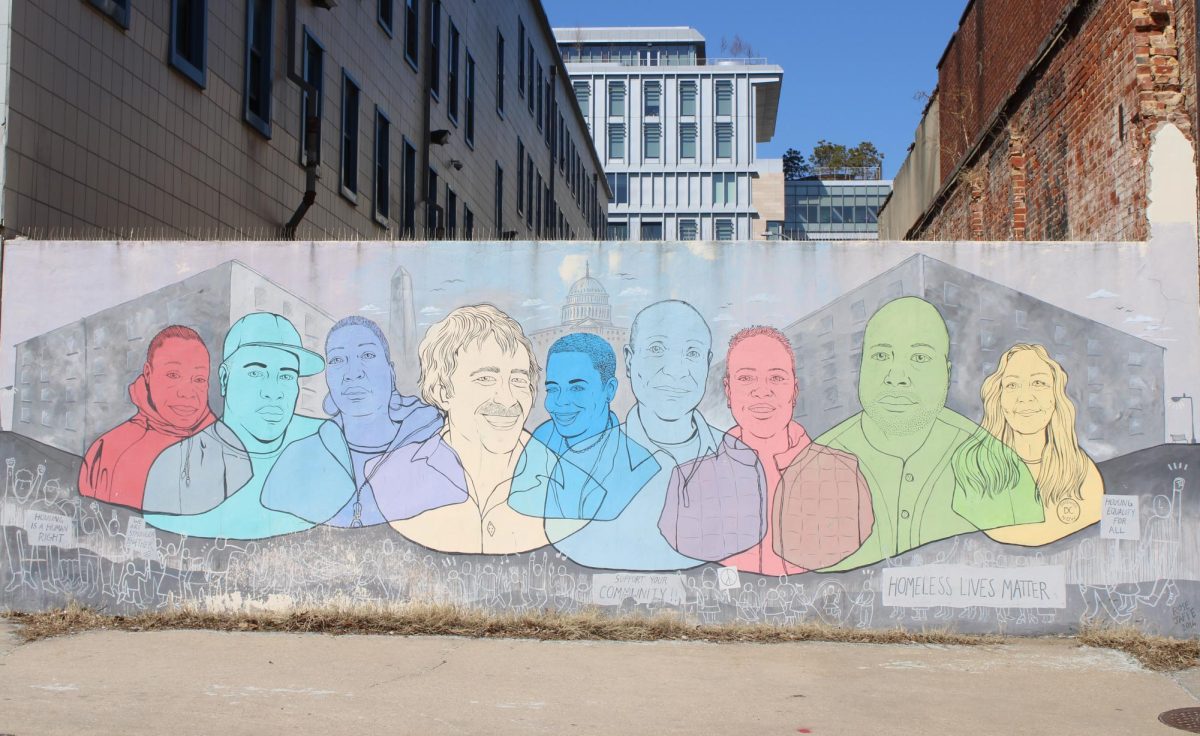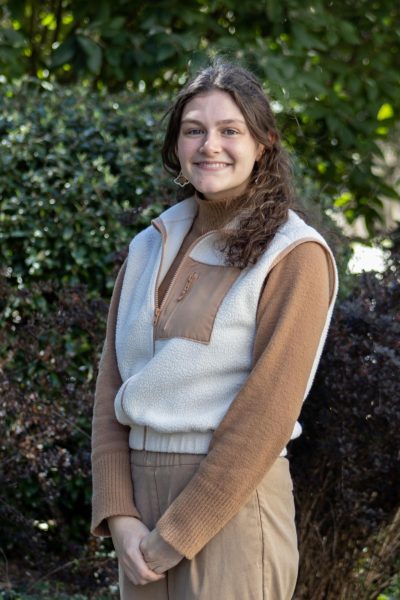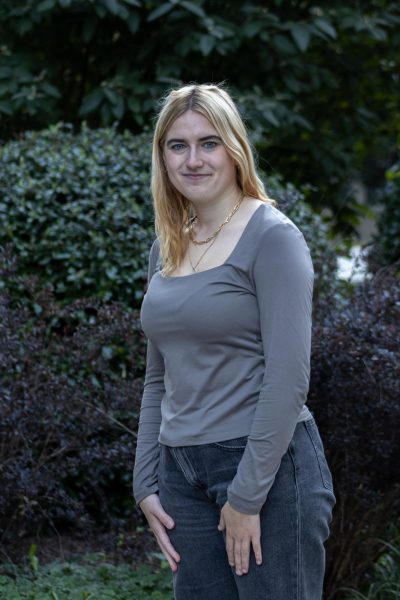Four years ago, when Jiya Wit began looking at colleges, she said she noticed a common theme amongst the student community at American University: Women outnumbered men.
While in the decision process, Wit said she felt uncertain about the gender gap on campus and asked an AU student if they also sensed it. Ultimately, the feeling of the gender ratio itself factored into her decision to attend AU, Wit said.
“Genuinely, I had to sit and think about it before coming here,” Wit said. “I just wanted to assess it because I was like, ‘Is this going to affect my college experience?’”
Although Wit, who majors in public relations and minors in business/entertainment, observed a student environment dominated by women at AU, students within the Kogod School of Business have noted the very opposite. Although 63% of undergraduate and graduate students at AU were women, just under half of the 988 students studying in Kogod identified as a woman, according to the 2022-23 Academic Data Reference Book, or ADRB.
The AU Office of Institutional Research and Assessment released the most recent ADRB during the Spring 2023 semester. The report includes university-wide data involving student enrollment, admissions and retention rates. ADRB data does not account for gender-nonconforming AU students, according to the reference book.
Kogod was the only school at AU with more men overall, while the other schools on campus possess a percentage of women students greater than 60%, according to the reference book. Some business students have noticed this unique characteristic of Kogod and have recognized the gender gap present in their classes.
Senior Madison Parker is double majoring in business and political science. She said the gender ratios in her political science classes differ from those in her Kogod classes.
Women make up 62.3% of all students within the School of Public Affairs, according to the ADRB.
“It’s weird because I feel like in my political science classes, it’s a little bit even,” Parker said. “There’s still more females than males, but I used to have a finance specialization class in Kogod and there were so many more males.”
Priyanka Mani, a sophomore majoring in business administration, said she’s noticed a difference between the gender distribution in her classes that cover both business topics and international studies as opposed to her classes that are solely business-oriented.
“In Kogod-SIS mixed classes, there’s more of a mix,” Mani said. “The ratio is a little more on the equal side, but in classes like accounting or finance or stuff with computer science, it’s majority male.”
The gender gap present in business classes has impacted the dynamics of the classroom, particularly in group projects, Mani said.
“What I have noticed is through group projects, in a male-dominated group, it’s harder to get your point across, and you kind of have to advocate a little more for yourself to be taken seriously or for them to think you’re smart, like as smart as them,” Mani said. “Whereas in a more female-dominated group, you don’t have to advocate for yourself because there isn’t that power dynamic.”
Kogod first-year Charles Herman said that although he has not felt the gender gap personally, he has heard his peers speak about how it has affected them.
“There are some small times this topic has come up,” Herman said. “So I’ve heard that sometimes the female population might not feel that they’re heard as much.”
Herman said gender norms perpetuated during childhood could also contribute to gender-based trends in the business world and the competitive nature of business itself.
“Even if you look at sports, usually, like when you grew up being a male, usually, there’s a strong emphasis on that competitive environment that sports can generate as well as action figures and all those things,” Herman said. “So I think that can somehow be transitioned sometimes into a business setting.”
One contributing factor to the gender gap in Kogod could be traditional gender career norms, which might lead more men to pursue a career in business, said Elina Paraschou, a first-year graduate student majoring in business analytics and co-president of the Kogod Women in Business Club.
“From a very young age we are taught that girls have to go to the humanities and guys are better at science,” Paraschou said. “So it makes you think, ‘Oh, I’m going to follow a different career path.’”
The gender gap is present not only in the student body but also in the professors in Kogod.
Stefania Biondino, a first-year graduate student studying business administration and co-president of the Kogod Women in Business Club, said that although she did not notice an unequal gender distribution among students in her classes, she did experience a lack of gender representation among professors in Kogod.
“I see, at least in regards to the MBA program, that in the faculty, there is a gap,” Biondino said. “The men definitely outnumber the women right now.”
Kogod Professors Susan Apgood and Anjali Varma said the systemic biases and trends in hiring may explain the gap between professors in the school who are men and those who are women.
“I think we still have the old boys network,” Apgood said. “I think people hire people that look like them, act like them, think like them. It’s just human nature.”
According to Internal Communications Manager Jasmine Pelaez, women comprise 36% of Kogod’s faculty. However, Pelaez said different gender ratios are reflected in the business school’s various departments. For example, the Managing and Marketing departments both have faculty compositions evenly split between men and women, Pelaez said.
Pelaez also said AU is committed to ensuring university faculty possess diverse representation, which extends to Kogod.
“Recruiting, retaining and recognizing a diverse group of faculty members is among our primary goals in the AU Plan for Inclusive Excellence,” Pelaez said. “This work is ongoing and resources, such as our Inclusive Hiring Toolkit for Faculty, help further our commitment to a diverse faculty.”
Apgood and Varma said they have made strides to create classrooms in Kogod that prioritize and support women studying business at AU. They created the Women in Organizational Leadership course in 2021, a course they said is designed to promote women entrepreneurship, as well as women in corporate business leadership.
With the class, Varma said she and Apgood wanted to facilitate an environment that creates opportunities for women in the workplace and exposes them to leadership skills they can use later in their careers.
“We realized that there was so much around this idea of women in the workplace and women in leadership and, really providing the tools for the next generation of women leaders is just something that we kind of became so passionate about,” Varma said.
As professors like Apgood and Varma create a supportive space for women in business at AU to develop necessary leadership skills, business students like Biondino and Paraschou said they have created a similar community outside the classroom.
As co-presidents of the Kogod Women in Business Club, Biondino and Paraschou said they have established a community for graduate women in business at AU that provides them with an empowering support system. Paraschou said the club helps students build strong relationships and networks by connecting members to resources and alumni outside of AU.
“We invited a bunch of speakers, and we got to hear their experiences starting their own businesses and their journey, what challenges they faced and it definitely empowers you,” Paraschou said. “It’s a great community.”
Although Paraschou said there is still improvement to be made within Kogod for women students, Biondino said she is hopeful about a shift in the representation of women in business at AU. Biondino said she thinks the gap is going to close itself soon and that women will eventually make up the majority of students within the school.
“Given the increasing representation of women in senior business roles who are also Kogod graduate students, it is likely that this trend will serve as a compelling factor to attract more female students to enroll in the Kogod School of Business in the future,” Biondino said. “I really see a change of trend in the next year, where women [in Kogod] will outnumber men in business.”
Varma said that creating community and fostering in-class conversations have contributed to that optimism, along with acknowledging the difference in the gender gap between AU and Kogod, as Varma and Apgood have done in their classes. This may catalyze future progress within Kogod to close the gender gap, Varma said.
“One of our main messages is that knowledge is power,” Varma said. “And having dialogue and having discussion and opening kind of conversation around some of this is the first step in really seeing advancement and change.”


